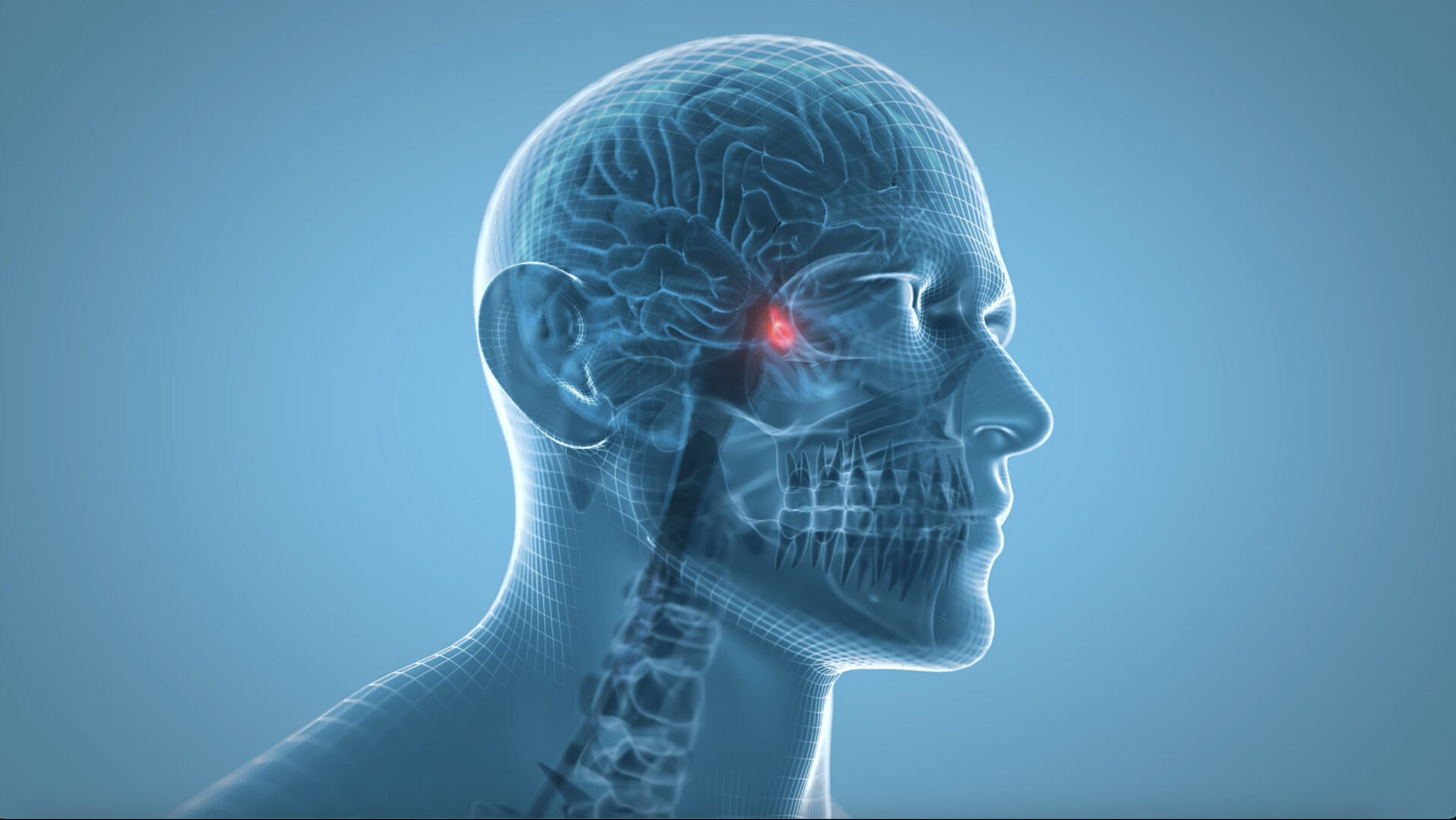Learning objectives
- Describe acromegaly
- Recognize signs and symptoms of acromegaly
- Anesthetic management of a patient with acromegaly
Definition and mechanisms
- Acromegaly is a chronic, progressive, hormone hypersecretion syndrome caused by an excess of growth hormone (GH) after the growth plates have closed (i.e., puberty)
- The hypersecretion of GH is the result of oversecretion of growth hormone-releasing hormone (GHRH) from the hypothalamus or oversecretion of the hormone itself from a pituitary adenoma
Signs and symptoms
| Affected area | Signs and symptoms |
|---|---|
| Face | Increase in size of skull and supraorbital ridges; enlarged lower jaw; increase in spacing between teeth/malocclusion |
| Hands and feet | Spade-shaped; carpal tunnel syndrome |
| Mouth/tongue | Macroglossia; thickened pharyngeal and laryngeal soft tissues; thickened vocal cords; reduction in the size of the laryngeal aperture; obstructive sleep apnea |
| Soft tissue | Thick skin; doughlike feel to palm |
| Skeleton | Vertebral enlargement; osteoporosis; kyphosis |
| Cardiovascular | Hypertension; cardiomegaly; impaired left ventricular function |
| Endocrine | Impaired glucose tolerance; diabetes |
| Other | Arthropathy; proximal myopathy |
Complications
- Diabetes mellitus type 2
- Hypertension
- Hypercholesterolemia
- Cardiomyopathy
- Pulmonary dysfunction
- Obstructive sleep apnea
- Osteoarthritis
- Goiter (enlargement of the thyroid gland)
- Colon polyps
Treatment
- Surgery: Preferred treatment; to remove the pituitary tumor
- Drugs:
- Somatostatin analogs: Drugs that reduce GH production
- Dopamine agonists: Drugs to lower hormone levels
- GH receptor antagonists: Drugs to block the action of GH
- Radiation therapy: Both used alone or in combination with surgery or drugs
Management
Four grades of airway involvement have been described in acromegaly:
| Grade | Airway involvement |
|---|---|
| 1 | No significant involvement |
| 2 | Nasal and pharyngeal mucosa hypertrophy but normal cords and glottis |
| 3 | Glottic involvement including glottic stenosis or vocal cord paresis |
| 4 | Combination of grades 2 and 3: Glottic and soft tissue abnormalities |
- Ventilation with a bag and mask is straightforward in acromegalic patients but an oral airway may be required
- Laryngoscopy and tracheal intubation prove more difficulty due to a combination of macrognathia, macroglossia, and expansion of the upper airway soft tissues
- Tracheostomy is recommended for grades 3 and 4, however, fiberoptic laryngoscopy is a safe alternative
- Tracheal intubation is feasible with standard techniques (i.e., external laryngeal pressure and the use of a gum elastic bougie or airway exchange catheter)
- Awake fiberoptic intubation is the technique of choice in case of anticipated difficult intubation in these patients
- Preoperative transthoracic echocardiography is useful to assess left ventricular size and performance, and to estimate pulmonary pressures due to associated cardiopulmonary complications
Keep in mind
- About one-quarter of acromegalic patients have an enlarged thyroid, which may compress the trachea
- Preoperative assessments help the anesthesiologist to understand the possibility of difficulties with airway management and tracheal intubation
- Difficult airway
- Macroglossia and enlarged epiglottis: Difficult bag-mask ventilation and direct laryngoscopy
- Recurrent laryngeal nerve palsy, narrow glottic opening, subglottic narrowing (stridor)
- Nasal turbinate enlargement: Caution with nasal intubation and consider a smaller endotracheal tube
Suggested reading
- Menon R, Murphy PG, Lindley AM. Anaesthesia and pituitary disease. Continuing Education in Anaesthesia Critical Care & Pain. 2011;11(4):133-137.
- Smith M, Hirsch NP. Pituitary disease and anaesthesia. Br J Anaesth. 2000;85(1):3-14.
- Seidman PA, Kofke WA, Policare R, Young M. Anaesthetic complications of acromegaly. Br J Anaesth. 2000;84(2):179-182.
We would love to hear from you. If you should detect any errors, email us [email protected]








